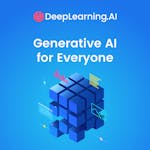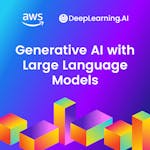Generative AI Definitions: A to Z Glossary Terms
Interested in generative ai but you keep seeing terms unfamiliar to you? This A-to-Z glossary defines key generative ai terms you need to know.
Generative AI professionals are immersed in developing, deploying, and maintaining software applications focused on generative models. They utilize various programming languages, frameworks, and libraries to build applications that can generate new content, such as images, text, or music, based on patterns and data learned from existing examples. With a focus on testing and collaboration, generative AI experts drive innovation in artificial intelligence, enabling machines to produce creative and novel outputs, and advancing various fields like art, language, and creativity.
This generative ai glossary can be helpful if you want to get familiar with basic terms and advance your understanding of generative ai.
Generative AI Definitions: A to Z Glossary Terms
Interested in generative ai but you keep seeing terms unfamiliar to you? This A-to-Z glossary defines key generative ai terms you need to know.
Generative AI professionals are immersed in developing, deploying, and maintaining software applications focused on generative models. They utilize various programming languages, frameworks, and libraries to build applications that can generate new content, such as images, text, or music, based on patterns and data learned from existing examples. With a focus on testing and collaboration, generative AI experts drive innovation in artificial intelligence, enabling machines to produce creative and novel outputs, and advancing various fields like art, language, and creativity.
This generative ai glossary can be helpful if you want to get familiar with basic terms and advance your understanding of generative ai.
Generative AI Terms
Adversarial Networks
Adversarial networks, specifically Generative Adversarial Networks (GANs), are a class of generative AI models that consist of two neural networks, the generator, and the discriminator, competing against each other to create realistic data.
Bayesian Networks
Bayesian networks are probabilistic graphical models used in generative AI to represent uncertain relationships between variables and make probabilistic predictions.
Conditional Generation
In generative AI, conditional generation refers to generating data samples conditioned on specific input or context, allowing for targeted and controlled generation.
Deep Belief Networks (DBNs)
Deep Belief Networks are generative models of multiple layers of stochastic, latent variables used for unsupervised learning tasks.
Encoder-Decoder Architecture
An encoder-decoder architecture is a generative AI model comprising an encoder to convert input data into a latent representation and a decoder to generate output data from the latent representation.
Fuzzy Logic
Fuzzy logic is a mathematical framework used in generative AI to handle uncertainty and imprecise reasoning in decision-making processes.
Generative Models
Generative models in AI are algorithms that learn to generate data similar to the training data, providing valuable insights into the underlying distribution of the data.
Hierarchical Models
Hierarchical models in generative AI are architectures that represent data in multiple levels of abstraction, capturing complex patterns and dependencies in the data.
Inference
Inference in generative AI refers to using trained models to make predictions or generate new data based on observed input.
Joint Probability Distribution
The joint probability distribution in generative AI represents the probability of multiple random variables occurring together, enabling the modeling of complex relationships between variables.
Kullback-Leibler Divergence
Kullback-Leibler Divergence quantifies the difference between two probability distributions commonly used in training generative AI models.
Latent Space
Latent space in generative AI represents a lower-dimensional space where data is mapped, allowing for efficient representation and generation of complex data.
Markov Chain Monte Carlo (MCMC)
Markov Chain Monte Carlo methods are used in generative AI to sample from complex probability distributions and estimate properties of the distribution.
Natural Language Generation (NLG)
Natural Language Generation is an application of generative AI that produces human-like text from structured data or other input forms.
Overfitting
Overfitting in generative AI occurs when a model performs well on the training data but fails to generalize to unseen data, resulting in poor performance.
Probability Density Function (PDF)
Given the underlying data distribution, the probability Density Function is used in generative AI to describe the likelihood of different outcomes occurring.
Quantum Generative Models
Quantum generative models are a recent development in generative AI that leverage principles from quantum computing to generate data samples.
Recurrent Neural Networks (RNNs)
Recurrent Neural Networks are a generative AI model with feedback connections, allowing them to process sequential data and generate sequences.
Sampling
Sampling in generative AI generates new data points from a trained generative model to explore the learned distribution.
Topic Modeling
Topic modeling in generative AI is discovering latent topics or themes in a collection of text documents.
Unsupervised Learning
Unsupervised learning in generative AI involves training models on data without explicit labels, enabling them to discover patterns and structures in the data.
Variational Autoencoders (VAEs)
Variational Autoencoders are generative models that combine autoencoders and variational inference elements to learn a compact latent representation of data and generate new samples.
Wasserstein Generative Adversarial Networks (WGANs)
Wasserstein Generative Adversarial Networks is a variant of GANs that use the Wasserstein distance as a metric to improve training stability and generate high-quality samples.
Zero-Shot Learning
Zero-Shot Learning in generative AI involves training models to perform tasks that have not been explicitly trained, allowing them to generalize to new tasks.
Conclusion
Congratulations on completing the A-to-Z glossary for Generative AI! These terms provide a solid foundation for understanding the various concepts and techniques in the fascinating field of generative AI. Whether you're a researcher, a developer, or an enthusiast, this glossary will serve as a valuable resource to enhance your knowledge and proficiency in generative AI. Happy exploring and innovating in the exciting world of generative AI!
Learn in-demand generative ai skills from industry leaders.
Artificial Intelligence Courses | Machine Learning Courses | Natural Language Processing (NLP) Courses | Business Communication Courses | Chatbot Courses | ChatGPT Courses | Reinforcement Learning Courses | Generative Adversarial Networks Courses | Marketing Analytics And Automation Courses | Prompt Engineering Courses
 Join a community of over 100 million learners from around the world
Join a community of over 100 million learners from around the world Learn from more than 200 leading universities and industry educators.
Learn from more than 200 leading universities and industry educators. 70% of all learners who have stated a career goal and completed a course report outcomes such as gaining confidence, improving work performance, or selecting a new career path.
70% of all learners who have stated a career goal and completed a course report outcomes such as gaining confidence, improving work performance, or selecting a new career path.- 100% online
- Flexible schedule
- Mobile learning
- Videos and readings from professors at world-renowned universities and industry leaders
- Practice quizzes
Can’t decide what is right for you?
Try the full learning experience for most courses free for 7 days.Register to learn with Coursera’s community of 87 million learners around the world








